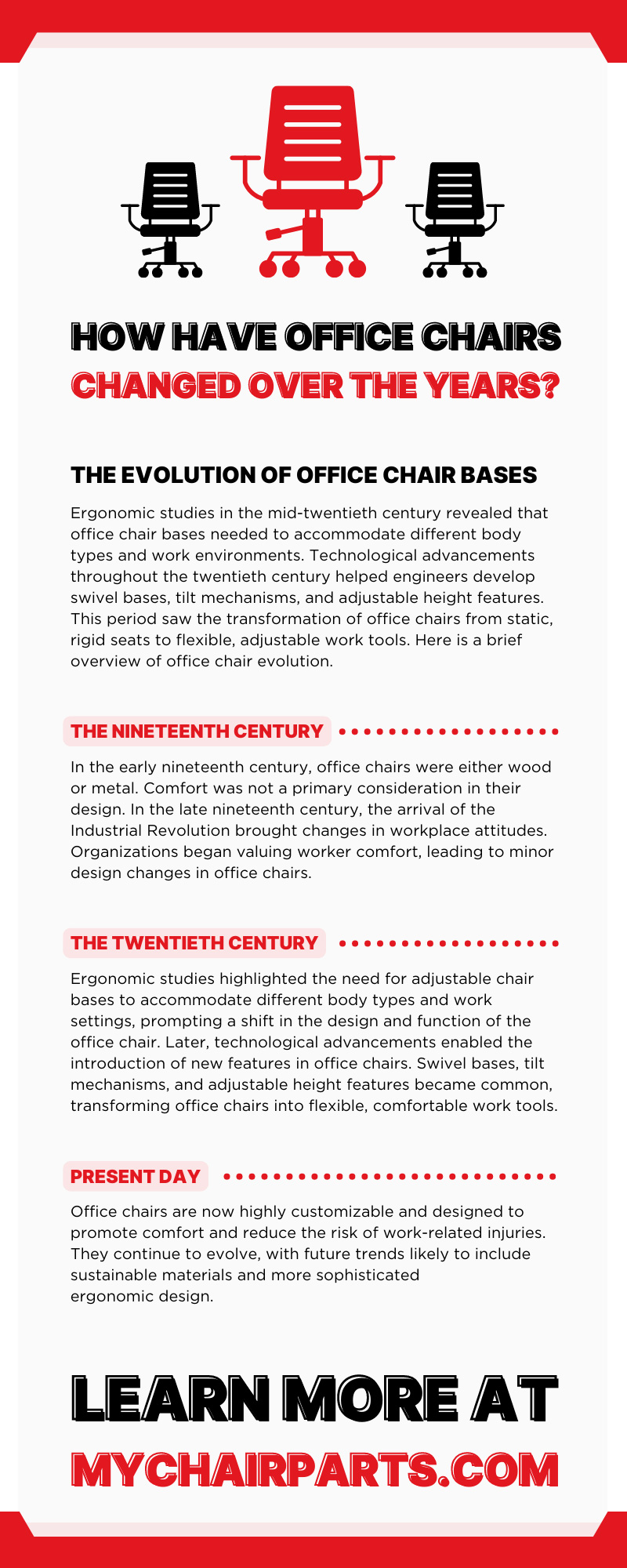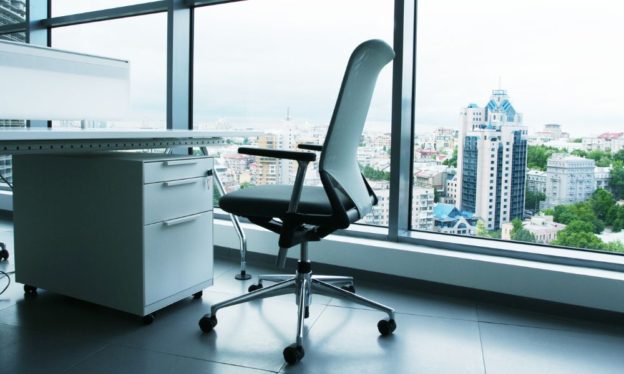An essential part of the modern workspace might be an adjustable-height desk, but the real MVP is your office chair. These reliable seats have evolved over the years from basic furniture to sophisticated creations. They continue to optimize comfort, productivity, and well-being. With ergonomic features, adjustable settings, and innovative materials, these chairs offer unparalleled body support, promoting proper posture and reducing the risk of musculoskeletal issues. From lumbar support to breathable mesh material, every aspect works together to enhance your experience. Our blog explores how office chairs have changed over the years and may encourage you to upgrade your favorite chair.
The Genesis of Ergonomic Chair Concept
Wilfred Dauphine, the mastermind behind the ergonomic chair, explored the relationship between furniture design and human comfort in the late 1960s. The research led Dauphin to found his company, Dauphin HumanDesign Group, dedicated to creating office furniture supporting the human body’s natural movements.
Dauphin took inspiration in his designs from the idea that office chairs needed to adapt to the human body, not the opposite. With improved technology and a better understanding of human anatomy, Dauphin’s design blueprints have brought the groundwork for the ergonomic chairs we know today. His designs revolutionized the furniture industry, highlighting the critical role of ergonomics in office design.
But despite Dauphin being one of the prominent minds behind ergonomically designed office furniture of today, many others have introduced their initiatives to enhance the office chair. Read on to learn about the evolution of office chair bases.
The Evolution of Office Chair Bases
So, how have office chairs changed over the years? While all chair parts have changed, the base has made the most difference throughout history. In the early 19th century, office chair bases featured wood or metal and suited utility rather than comfort. As the Industrial Revolution took hold, businesses recognized the importance of worker comfort and productivity, leading to changes in chair design.
Ergonomic studies in the mid-twentieth century revealed that office chair bases needed to accommodate different body types and work environments. Technological advancements throughout the twentieth century helped engineers develop swivel bases, tilt mechanisms, and adjustable height features. This period saw the transformation of office chairs from static, rigid seats to flexible, adjustable work tools. Here is a brief overview of office chair evolution.
The Nineteenth Century
In the early nineteenth century, office chairs were either wood or metal. Comfort was not a primary consideration in their design.
In the late nineteenth century, the arrival of the Industrial Revolution brought changes in workplace attitudes. Organizations began valuing worker comfort, leading to minor design changes in office chairs.
The Twentieth Century
Ergonomic studies highlighted the need for adjustable chair bases to accommodate different body types and work settings, prompting a shift in the design and function of the office chair.
Later, technological advancements enabled the introduction of new features in office chairs. Swivel bases, tilt mechanisms, and adjustable height features became common, transforming office chairs into flexible, comfortable work tools.
Present Day
Office chairs are now highly customizable and designed to promote comfort and reduce the risk of work-related injuries. They continue to evolve, with future trends likely to include sustainable materials and more sophisticated ergonomic design.
Diverse Types of Office Chair Bases
More office chair bases today are divergent; they come in various forms and serve unique purposes. Each base type offers different advantages, such as the classic four-legged base that provides stability, and the five-star base offers dual mobility and flexibility for dynamic work environments. A pedestal base combines the stability of four-legged bases with the flexibility of five-star bases.
Office chair designers use various materials to craft their bases. Plastic is a popular option because it’s lightweight and inexpensive. Many office chair designers also use a variety of metals, such as aluminum or steel, because they’re durable, stable, and suitable for heavy-duty use. Wood is also an option, though it’s not common to find nowadays unless it’s for temporary use.
Impact of Office Chair Bases on Health and Productivity
Ergonomics has significantly influenced the evolution of office chair bases. Some people observe a strong correlation between comfortable seating and increased productivity. Uncomfortable office chairs can lead to back pain, neck strain, and other health issues that can decrease productivity.
Office chair bases play a crucial role in ensuring proper ergonomics. Adjustable bases allow individuals to tailor their seating to their needs, reducing the likelihood of discomfort and injury. Furthermore, adjustable bases, such as swivel and caster bases, promote regular position changes that can alleviate muscle strain.
The Benefits of Upgrading an Office Chair Base
Upgrading an office chair base offers several benefits, improving comfort, productivity, and overall well-being. A superior base provides stability and mobility, enabling smoother movement and transitions in the workspace. Having a better base for your office chair saves time, enhances efficiency, and reduces the risk of musculoskeletal disorders caused by prolonged sitting.
A high-quality base can prolong the lifespan of an office chair. Durable materials such as steel or aluminum ensure the chair remains functional and comfortable for years. Upgrading your office chair base could also improve the image of your office. Newer designs with advanced functionalities reflect a commitment to innovation and employee welfare. Some upgraded bases align with sustainability trends, using recycled or eco-friendly materials. Investing in a chair made from sustainable materials reduces the environmental footprint and enhances the organization’s reputation as a responsible business.
Future Trends in Office Chair Bases
As we look to the future, the evolution of office chair bases continues to provide new and exciting solutions. Anticipated trends include increased customization, smart technology integration, and a growing emphasis on sustainability.
With environmental awareness on the rise, using recycled and eco-friendly materials in office chair bases will likely increase. This shift would reduce the environmental impact of office furniture production and offer a new selling point for eco-conscious consumers.
Looking At the Future of Improved Office Chair Design
The evolution of office chair bases reflects the changing needs and values of workplaces. As we move into the future, the focus on comfort, productivity, and sustainability will likely continue to shape office chair design. While the office chair of tomorrow may look different from today’s models, the office chair will continue to evolve as an integral tool in modern work environments.
So, what are you waiting for? Isn’t it time to give your office chair (and back) the upgrade they deserve? At Swivel Chair Parts, we are at the forefront of ergonomic innovations. Our cutting-edge office chair bases are about sitting comfortably, improving productivity, and reducing future health problems. Transform your workspace and feel the difference an improved chair base can make to enhance your work day. Reinvent your favorite office chair with Swivel Chair Parts.

